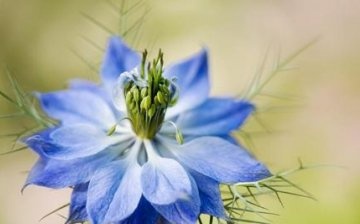Nigella flower - beauty, taste and benefit
The beautiful and, oddly enough, the official name of the flower is nigella, happily neighbors with a dozen other common names. In our country, this plant is often called nigella. And also: the hair of Venus, the girl in greenery, kalindzhi (kalongi), black cumin and Roman coriander. Only from the names one can already guess that this flower is not simple, but spicy. More precisely, its seeds are used as a spice.
What was formerly cultivated by the inhabitants of the Mediterranean exclusively as a food supplement is today cultivated around the world as an ornamental plant. The nigella flower is very interesting, it cannot be confused with any other. When it is just about to bloom, it looks like a fluffy ball, which then turns into a delicate, light star. Fading away, nigella leaves decorative seed sacs, which also look very original. The lacy greenery of this plant will be appropriate in many flower beds, garden compositions, on alpine slides, etc. and. etc.
In addition to the spicy taste, nigella seeds are also healing. They have a good effect on the work of the gastrointestinal tract and liver, have a weak diuretic and anthelmintic effect. And nigella oil, according to research by scientists, is a powerful antibacterial agent, not inferior in strength to some modern antibiotics.
With all this, growing this plant is not at all difficult. It reproduces well by self-seeding, without drowning out other flora. She is not very demanding on soils, she loves sunny areas more.



